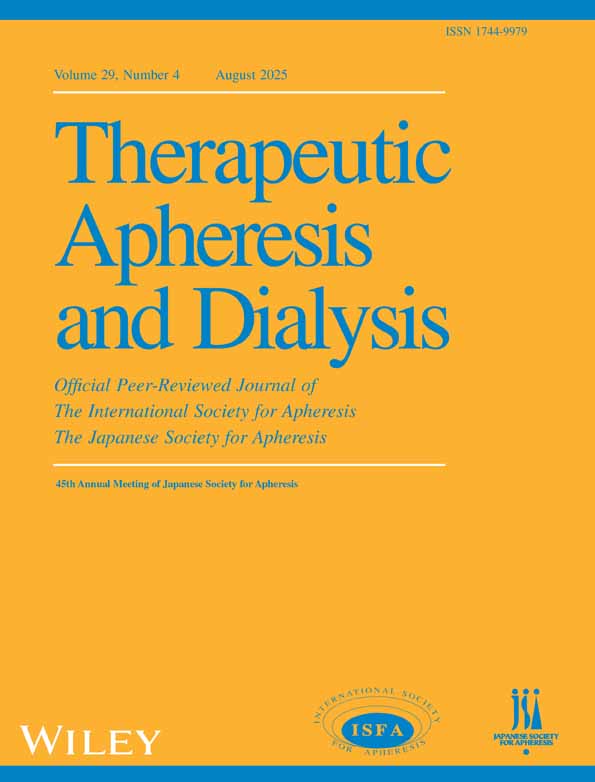Limited Utility of Serum Hepcidin as a Marker for Erythropoiesis-Stimulating Agent Hyporesponsiveness in Hemodialysis Patients: An Analysis From the INFINITY Cohort
Funding: The authors received no specific funding for this work.
ABSTRACT
Background
Although erythropoiesis-stimulating agents (ESAs) have improved anemia management, some patients on maintenance hemodialysis (HD) exhibit hyporesponsiveness. Hepcidin, a key regulator of iron homeostasis, may play a role in this process. However, its potential as a marker for ESA hyporesponsiveness remains unclear due to conflicting findings of previous studies. This study aimed to evaluate serum hepcidin-25 as a marker for ESA hyporesponsiveness and identify factors influencing hepcidin levels in HD patients.
Methods
This prospective observational study included 478 HD patients receiving ESA from the INFINITY cohort. Blood samples were collected before and after ESA administration to measure serum hepcidin-25. ESA hyporesponsiveness was defined by an erythropoietin resistance index (ERI) of 15 or higher. Logistic regression and linear regression analyses were used to identify factors associated with ESA hyporesponsiveness and hepcidin levels.
Results
Among patients receiving ESAs, 15% were classified as hyporesponsive. In the darbepoetin alpha group, hyporesponsive patients had lower hepcidin-25 levels; however, this association was not retained in multivariable analysis. No difference in hepcidin was observed in the recombinant human erythropoietin (EPO) group. Higher C-reactive protein (CRP), ferritin, transferrin saturation (TSAT), albumin, and glycoalbumin were linked to increased hepcidin, while being male and higher ESA dosage were associated with lower hepcidin levels.
Conclusions
Hepcidin-25 levels were lower in ESA hyporesponsive patients; however, the association was not significant in multivariable analysis. Thus, routine measurement of hepcidin may not be necessary for diagnosing ESA hyporesponsiveness. The novel association between hepcidin and glycoalbumin suggests an interaction between iron regulation and glucose metabolism, warranting further study.
Conflicts of Interest
The authors declare no conflicts of interest.
Open Research
Data Availability Statement
The data that support the findings of this study are available from the corresponding author upon reasonable request.




